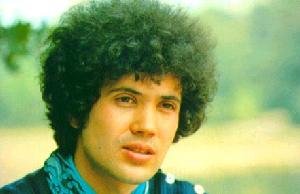
Lucio Battisti was an Italian singer-songwriter and composer. He is widely recognized for songs that defined the late 1960s and 1970s era of Italian songwriting.

Giulio Rapetti, best known as Mogol, is an Italian music lyricist. He is best known for his collaborations with Lucio Battisti, Gianni Bella, Marcella Bella, Adriano Celentano and Mango.

Images is the twelfth studio album by the Italian singer and songwriter Lucio Battisti. It was released in September 1977 by RCA Victor.
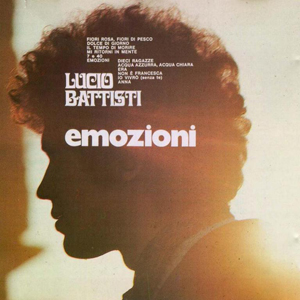
Emozioni (Emotions) is the third studio album by the Italian singer-songwriter Lucio Battisti. It was released in December 1970 by Dischi Ricordi.

Una giornata uggiosa is the fourteenth studio album by the Italian singer and songwriter Lucio Battisti. It was released in January 1980 by Numero Uno.
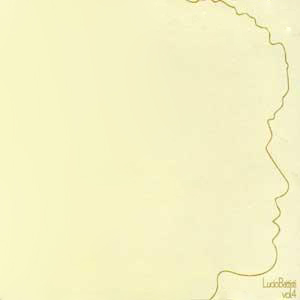
Lucio Battisti vol. 4 is the fifth studio album by the Italian singer-songwriter Lucio Battisti. It was released on 21 October 1971 by Dischi Ricordi.
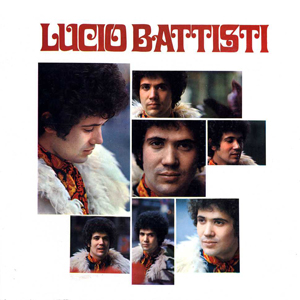
Lucio Battisti is the debut studio album by the Italian singer-songwriter Lucio Battisti. It was released in March 1969 by Dischi Ricordi.

Amore e non amore is a concept album by the Italian singer and songwriter Lucio Battisti, and the fourth studio album overall. It was released in July 1971 by Dischi Ricordi.
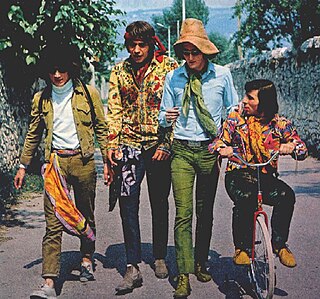
Equipe 84 were an Italian beat band formed in 1964 in Modena. The name was originally suggested by a friend of the band, Pier Farri. Equipe was thought to be a word that would resonate more easily outside of their home country, and though the origin of 84 is unclear, it is presumed to have been the total age of the members of the band at the moment of its inception.

The Rokes were a pop rock band formed in 1963 in Italy by English expatriates. Their most successful songs included "Piangi con Me", the original version of "Let's Live for Today", a US hit when re-recorded by The Grass Roots; and "Che Colpa Abbiamo Noi", an Italian language version of "Cheryl's Going Home" by Bob Lind.
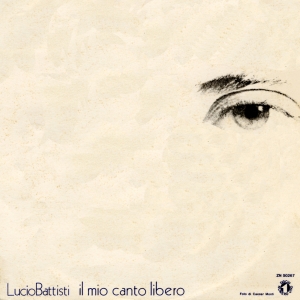
"Il mio canto libero" is a song written by Italian singer-songwriter Lucio Battisti and lyricist Mogol. The song was recorded by Battisti for the album of the same title, and released as a single in November 1972 for Mogol's recording label Numero Uno. The song was a commercial success in Italy, topping the Musica e dischi singles chart for nine consecutive weeks in 1973 and becoming the third best-selling single of the year. During the following years, it was covered by several artists, and it became a classic of Italian popular music. It was certified double platinum by the Federation of the Italian Music Industry in 2024, for domestic equivalent sales exceeding 200,000 units since 2009.

Lucio Battisti Vol. 2 is the second studio album by the Italian singer-songwriter Lucio Battisti. It was released in July 1970 by Dischi Ricordi.

"Amarsi un po'" is a song composed by Lucio Battisti and Mogol, and performed by Lucio Battisti. It was released as a single in March 1977, with "Sì, viaggiare" as B-side. The single peaked at first place ten weeks on the Italian hit parade and was the most sold single of the year in Italy. The same year Battisti released an English version of the single for international markets, with the two songs renamed "To Feel in Love" and "Keep on Cruising" and with lyrics by Peter Powell. They were included in the album Images.
"E penso a te" is a song composed in 1970 by Lucio Battisti based on the lyrics by Mogol. Initially sung by Bruno Lauzi, it was subsequently re-recorded by numerous other artists. The most popular version remains the one which its author gave in 1972.
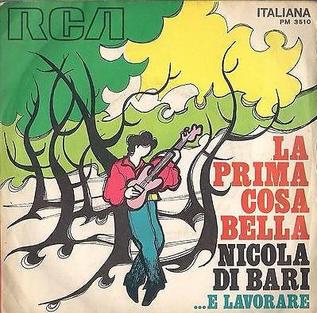
"La prima cosa bella" is a song composed by Nicola Di Bari and Mogol. The song ranked second at the twenth edition of the Sanremo Music Festival, with a double performance by Nicola Di Bari and Ricchi e Poveri.

Dik Dik is an Italian beat/pop-rock band, named after the antelope Dik-dik, formed in the 1960s and still active. They were most popular in the late 1960s, when they released a string of hit singles with the contribution of renowned lyric-writer Mogol and songwriter Lucio Battisti, their greatest successes being "Sognando la California" and "Senza luce", respectively covers of "California Dreamin'" by the Mamas and Papas and "A Whiter Shade of Pale" by Procol Harum. While their early production is mostly inspired by the Beatles, in the 1970s they also experimented in other genres, including progressive rock. They went on hiatus in the 1980s but later returned to the scene, mostly in revival television shows and live performances.
"Auschwitz" is a song composed by Francesco Guccini, and originally performed by Equipe 84. It was first released as the B-side of a cover of Sonny & Cher's "Bang Bang ", and later included in Equipe 84's album Io ho in mente te. Although the song was written by Guccini it was credited to Lunero and Maurizio Vandelli as the author at the time was not a member of the SIAE.
"Balla Linda" is a song by Italian musician Lucio Battisti released on 20 April 1968 With this song Battisti participated in the Cantagiro 1968 where he obtained a good success.

"Emozioni " is a 1970 song composed by Lucio Battisti (music) and Mogol (lyrics), arranged by Gian Piero Reverberi and performed by Lucio Battisti.
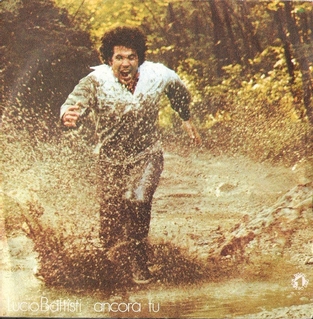
"Ancora tu" is a 1976 song composed by Lucio Battisti (music) and Mogol (lyrics) and performed by Lucio Battisti.





















